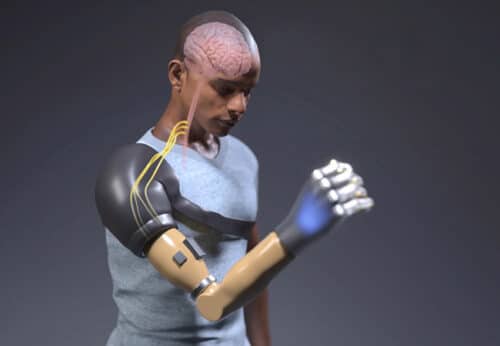Researchers from Cleveland Clinic have developed a Brain Machine Interface (BMI) based prosthetic bionic arm that can replicate the natural movement of the arm.

Engineers and scientist have been creating variety of prosthetic limb that can mimic the natural arm movement. But there always is a need for improvement. The limitation with these prosthetic arm is ‘control’. The human body is a network of interconnected cells which allow to perform conscious and unconscious task such as holding on to an object and even feeling texture, temperature, toughness etc.
A team of researchers from Cleveland Clinic have now developed a neurorobotic prosthetic arm for patients with upper-limb amputations that allows wearers to think, behave and function more like a person without an amputation. The investigators developed the bionic prosthetic system to combine three important functions:
- Intuitive motor control
- Touch
- Grip kinesthesia, or the intuitive feeling of opening and closing the hand
They have modified a standard-of-care prosthetic with this complex bionic system that enables wearers to move their prosthetic arm more intuitively and feel sensations of touch and movement at the same time. It is considered to be the first to test of all three sensory and motor functions in a neural-machine interface at once in a prosthetic arm. The closed-loop neural-machine interface connects with the wearer’s amputated limb nerves. It enables patients to send nerve impulses from the brain to the prosthetic limb when they wish to use or move it, as well as to receive physical information from the environment and relay it back to the brain through the nervous system.
The researchers tested the new bionic limb on two study participants with upper limb amputation who had previously undergone targeted sensory and motor reinnervation — procedures that establish a neural-machine interface by redirecting amputated nerves to remaining skin and muscles.
Participants performed tasks reflective of everyday behaviors that require hand and arm functionality. Adding touch to motor control enabled the participants to no longer have to watch their prosthesis. They could find objects without looking, and they could more effectively correct for their movement mistakes.
Reference : “Neurorobotic fusion of prosthetic touch, kinesthesia, and movement in bionic upper limbs promotes intrinsic brain behaviors” DOI: 10.1126/scirobotics.abf3368






